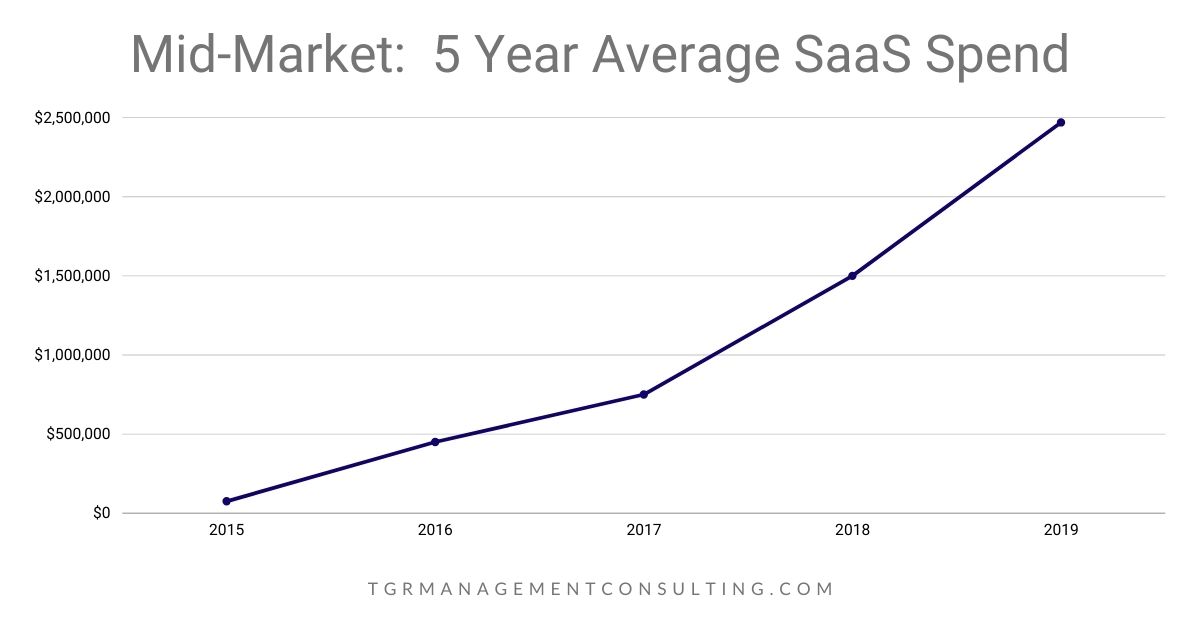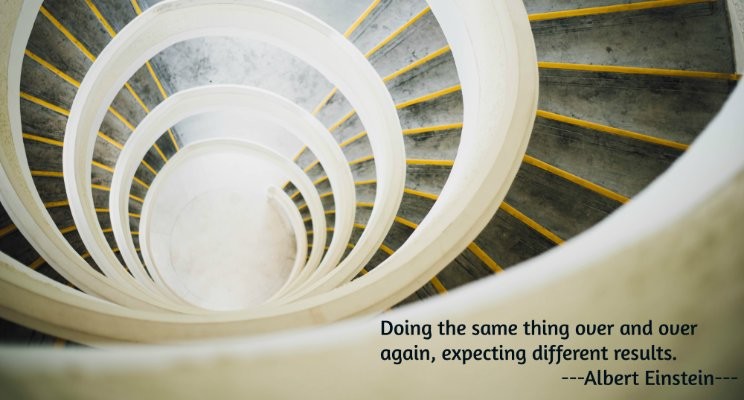Companies are increasingly paying for apps they aren’t using enough or are redundant. This may be due to decentralization of the software acquisition process, employees creating new accounts, or companies forgetting to unsubscribe from applications they are no longer needing. This phenomenon deserves its own name: SaaS waste.
Software optimization can be used to identify the areas of that need attention within an organization to reduce SaaS waste. That’s where software acquisition and process optimization merge together…
SaaS Subscriptions Continually Increase and Cause Issues with Companies
For example, the average employee uses at least 8 applications and the company spends an average of $2,884 in SaaS subscriptions on them, 2018. In 2020, the average dollar amount has drastically increased for a medium-sized company spending $8,580 on SaaS per employee.

The statistics further show that organizations subscribe to 3.6 duplicate apps on average and 5.4% of apps are not being used to their full extent. The amount wasted averages to $135,000 annually per company.
Consolidating tools creates additional opportunities to consolidate processes as well as data. To determine this you’ll want to both map out your processes before purchasing software, in addition having a defined software acquisition process.
Process Optimization with Software Acquisition?
Process Optimization is a method of reviewing a sequence of tasks or steps and identifying opportunities for eliminating redundancy or inefficiency. Its commonly used as a means to minimizing costs and maximizing throughput. Slight changes in your workflow, introducing automation, or eliminating duplicative tools, can make huge differences.
Software acquisition can include: discovery, accounting, tracking, compliance and cost analysis and/or cost project of the software that a business owns and manages.
Risks with Decentralized Software Acquisition
In 2020, the number of billing owners for a medium sized business increased from 12 (in 2019) to 21 (in 2020). The increase puts emphasis that departments and employees are choosing their own SaaS platforms convenient for them .
The risks associated with employees purchasing their own software and SaaS applications include privacy, cybersecurity risks, redundancies, Data Loss Protection (DLP), malware protection and software waste.
Privacy
Employees may not be aware that the data they are uploading is not being stored on a company server but rather their unsecured personal device or third-party vendor’s servers. This can lead to the company having no control over what is happening with sensitive data and puts employees at risk of privacy breaches.
Cybersecurity Risks
The risks posed by decentralized software also include cybersecurity issues. Employees could be putting their work, as well as all customer information, in jeopardy when they fail to do a thorough check of the software. Whether the software is malware or a software application that is not secure.
Software Redundancies and Waste
Decentralized software may lead to redundancies, which is a waste of the company’s budget. This means that they are paying for multiple copies of one piece of software when just one would suffice. This is a waste of capital and duplicating software unnecessarily. It also results in time spent learning, maintaining, and training on each new application an employee acquires for their own use (which can be another form of data loss protection).
Data Loss Protection
Data loss is a possible risk when an employee has sole access to the data and if they leave or are not available, then there will be no one else to take over their work. Another risk is if the software is not maintained or fails and the data is lost.
Malware Protection
Employees may purchase software without knowing whether it’s malware-free. It can have malware embedded in it that could compromise company or customer data.
How to get started with Process Optimization for Saas Waste
This is the hard part. It’s a little like rallying the family to organize the garage. It’s hard work, heavy lifting, a little messy, and no one wants to do it…. but it needs to be done.
There are two keys to reducing and sustaining SaaS Waste: Tool Consolidation and Business Workflow mapping. These need to be done in tandem. One without the other will either yield limited results or results for a limited time.
- Tool consolidation. Documenting all the solutions in use in the organization including business benefit, users, and costs. If you aren’t sure where to get the information, start with someone in Finance or Accounting, they usually know what is being paid and who requested it.
- Business Workflow Analysis. Conduct high-level workflow mapping with heavy users of each application looking for areas of process and/data redundancy.
- Software Acquisition Process. Create an acquisition process that allows for equal participation from business users and IT that will balance the need to leverage existing tools while also seeking opportunities for improvement that new tools offer.
In TGR Management’s experience, most companies fail to make significant improvements with process optimization of Saas waste because it’s not a priority for any one person or group to own. The process optimization task needs to be tied to an organization’s cost reduction goal. As companies look to rebound from the pandemic and balance hybrid teams, having the right Saas solution mix and budget balance will be key for organization optimization.
Process Optimization with TGR Management Consulting
Process Optimization is a continuous task in a fast-paced environment. With the globalized economy constantly evolving, being up-to-date, and constantly improving the quality of our products and services to match the rapidly changing demands is what makes room for TGR Management Consulting to thrive.
Process Optimization scrutinizes what could be working better and then does that by making the best possible use of everything a company offers: including your talent, and treasure (the 3 T’s). Part of what TGR Management Consulting does is exactly that; bringing in the expertise needed for clients to drive forward in the globalized economy with process optimization—whether is it is for tool consolidation, business workflow analysis, or defining a software acquisition process for Saas waste.
___________
Need Help getting started?
If you are ready to grow and want to improve your ability to compete, let’s talk.
TGR Management Consulting is a proud woman-owned consulting company, focused on helping companies maximize efficiency, elevate productivity, and amplify profitability. Connect or follow Tiffany Rosik, CEO of TGR Management Consulting on LinkedIn.




